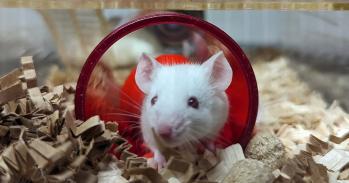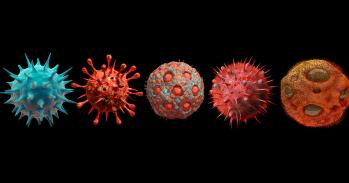Sheep can be trained to recognise human faces from photographic portraits – and can even identify the picture of their handler without prior training – according to new research from scientists at the University of Cambridge.
Sheep can be trained to recognise human faces from photographic portraits – and can even identify the picture of their handler without prior training – according to new research from scientists at the University of Cambridge.
We’ve shown that sheep have advanced face-recognition abilities, comparable with those of humans and monkeys
Jenny Morton
The study, published today in the journal Royal Society: Open Science, is part a series of tests given to the sheep to monitor their cognitive abilities. Because of the relatively large size of their brains and their longevity, sheep are a good animal model for studying neurodegenerative disorders such as Huntington’s disease.
The ability to recognise faces is one of the most important human social skills. We recognise familiar faces easily, and can identify unfamiliar faces from repeatedly presented images. As with some other animals such as dogs and monkeys, sheep are social animals that can recognise other sheep as well as familiar humans. Little is known, however, about their overall ability to process faces.
Researchers from Cambridge’s Department of Physiology, Development and Neuroscience trained eight sheep to recognise the faces of four celebrities (Fiona Bruce, Jake Gyllenhaal, Barack Obama and Emma Watson) from photographic portraits displayed on computer screens.
Training involved the sheep making decisions as they moved around a specially-designed pen. At one end of the pen, they would see two photographs displayed on two computer screens and would receive a reward of food for choosing the photograph of the celebrity (by breaking an infrared beam near the screen); if they chose the wrong photograph, a buzzer would sound and they would receive no reward. Over time, they learn to associate a reward with the celebrity’s photograph.
After training, the sheep were shown two photograph – the celebrity’s face and another face. In this test, sheep correctly chose the learned celebrity face eight times out of ten.
In these initial tests, the sheep were shown the faces from the front, but to test how well they recognised the faces, the researchers next showed them the faces at an angle. As expected, the sheep’s performance dropped, but only by about 15% - a figure comparable to that seen when humans perform the task.
Finally, the researchers looked at whether sheep were able to recognise a handler from a photograph without pre-training. The handlers typically spend two hours a day with the sheep and so the sheep are very familiar with them. When a portrait photograph of the handler was interspersed randomly in place of the celebrity, the sheep chose the handler’s photograph over the unfamiliar face seven out of ten times.
During this final task the researchers observed an interesting behaviour. Upon seeing a photographic image of the handler for the first time – in other words, the sheep had never seen an image of this person before – the sheep did a 'double take'. The sheep checked first the (unfamiliar) face, then the handler’s image, and then unfamiliar face again before making a decision to choose the familiar face, of the handler.
“Anyone who has spent time working with sheep will know that they are intelligent, individual animals who are able to recognise their handlers,” says Professor Jenny Morton, who led the study. “We’ve shown with our study that sheep have advanced face-recognition abilities, comparable with those of humans and monkeys.
“Sheep are long-lived and have brains that are similar in size and complexity to those of some monkeys. That means they can be useful models to help us understand disorders of the brain, such as Huntington’s disease, that develop over a long time and affect cognitive abilities. Our study gives us another way to monitor how these abilities change, particularly in sheep who carry the gene mutation that causes Huntington’s disease.”
Professor Morton’s team recently began studying sheep that have been genetically modified to carry the mutation that causes Huntington’s disease.
Huntington’s disease affects more than 6,700 people in the UK. It is an incurable neurodegenerative disease that typically begins in adulthood. Initially, the disease affects motor coordination, mood, personality and memory, as well as other complex symptoms including impairments in recognising facial emotion. Eventually, patients have difficulty in speech and swallowing, loss of motor function and die at a relatively early age. There is no known cure for the disease, only ways to manage the symptoms.
The research was supported by the CHDI Foundation, Inc., a US-based charitable trust that supports biomedical research related to Huntington’s disease.
Reference
Knolle, F et al. Sheep recognize familiar and unfamiliar human faces from two-dimensional images. Royal Society Open Science; 8 Nov 2017; DOI: 10.1098/rsos.171228

The text in this work is licensed under a Creative Commons Attribution 4.0 International License. For image use please see separate credits above.




